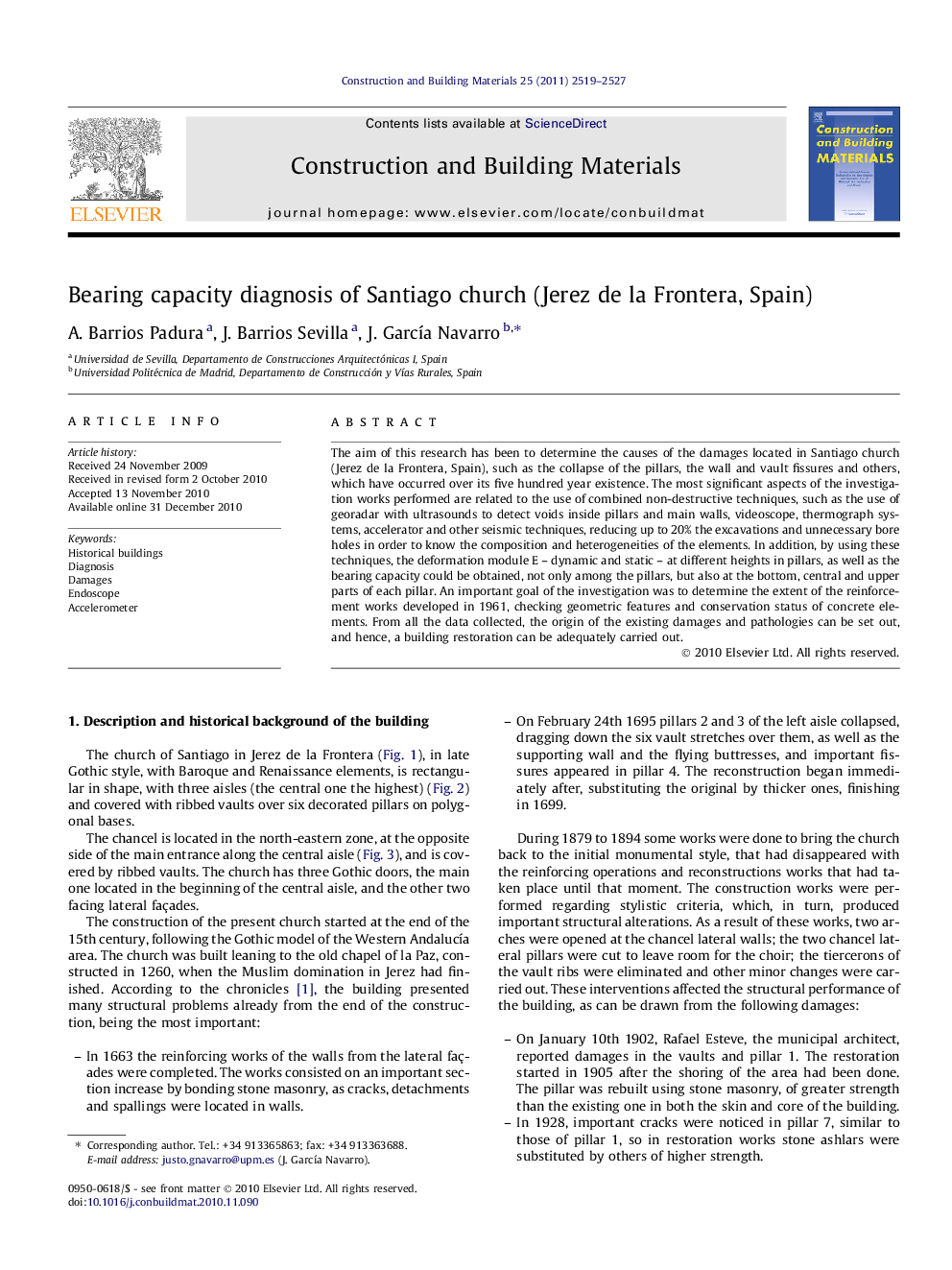| Article ID | Journal | Published Year | Pages | File Type |
|---|---|---|---|---|
| 259293 | Construction and Building Materials | 2011 | 9 Pages |
The aim of this research has been to determine the causes of the damages located in Santiago church (Jerez de la Frontera, Spain), such as the collapse of the pillars, the wall and vault fissures and others, which have occurred over its five hundred year existence. The most significant aspects of the investigation works performed are related to the use of combined non-destructive techniques, such as the use of georadar with ultrasounds to detect voids inside pillars and main walls, videoscope, thermograph systems, accelerator and other seismic techniques, reducing up to 20% the excavations and unnecessary bore holes in order to know the composition and heterogeneities of the elements. In addition, by using these techniques, the deformation module E – dynamic and static – at different heights in pillars, as well as the bearing capacity could be obtained, not only among the pillars, but also at the bottom, central and upper parts of each pillar. An important goal of the investigation was to determine the extent of the reinforcement works developed in 1961, checking geometric features and conservation status of concrete elements. From all the data collected, the origin of the existing damages and pathologies can be set out, and hence, a building restoration can be adequately carried out.
Research highlights► Use of combined non-destructive techniques reducing the excavations and unnecessary bore holes. ► Deformation module E and bearing capacity calculations at different heights in pillars. ► Extent of the reinforcement works, checking geometric features and conservation status of concrete elements.
